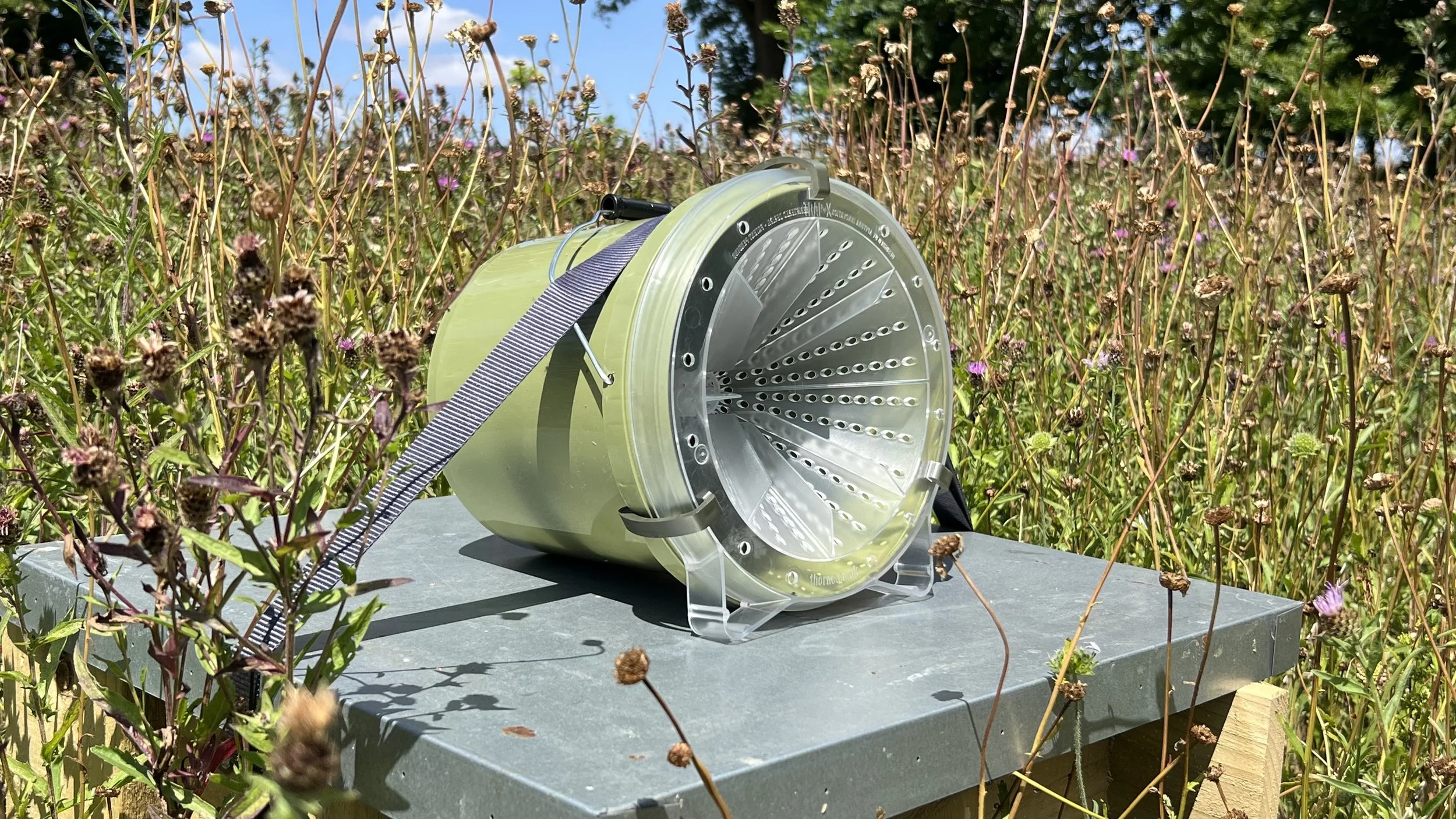ASIAN HORNET TRAP PLACEMENT STRATEGIES.
Deployed Apitura TRAP-X® - Asian Hornet Trap.
Understanding Asian Hornet Behaviour: Asian hornets, notably Vespa velutina, exhibit distinct predatory behaviours that target honeybees and pose a considerable threat to apiaries. These voracious predators typically lurk near hive entrances, ambushing foraging bees as they enter or exit. Moreover, Asian hornets are drawn to sugar sources, including ripened fruits and nectar, heightening the risk they pose to honeybee colonies.
Optimal Asian Hornet Trap Placement Strategies:
Proximity to Hive Entrances: Placing traps such as Apitura TRAP-X in close proximity to hive entrances is paramount, as this is where Asian hornets frequently launch their attacks on foraging bees. By strategically siting traps near hive entrances, you intercept hornets before they can inflict harm on your honeybee colonies, effectively safeguarding the hive's perimeter.
Along Perimeter Fences and Boundaries: Asian hornets often patrol the perimeter of apiaries in search of prey. Establishing a barrier of traps along perimeter fences and boundaries serves as a deterrent, intercepting hornets before they infiltrate the apiary. Ensure traps are evenly spaced along the perimeter to maximise coverage.
Adjacent to Water Sources: Water sources are essential for Asian hornets, particularly during hot weather. Placing traps near ponds, streams, or birdbaths capitalises on this necessity, attracting hornets seeking hydration. By strategically siting traps near water sources, you increase the likelihood of intercepting hornets before they reach your hives.
Shaded Locations: Asian hornets are more active during warm, sunny days. Positioning traps in shaded areas where hornets seek refuge from the heat enhances their attractiveness. Consider placing traps under trees or shaded structures to optimise their effectiveness, especially during periods of heightened hornet activity.
Elevated Positions: Mounting traps at elevated positions, such as on trees or poles, offers several advantages. Asian hornets tend to fly at higher altitudes when scouting for prey, making elevated traps more visible and enticing. Additionally, elevated traps are less susceptible to interference from ground-level obstacles and vegetation.
Maintenance and Monitoring Protocols: Regular maintenance and monitoring are essential to ensure the ongoing effectiveness of Asian hornet traps. Conduct frequent inspections to remove or destroy captured hornets and replenish bait as needed.
Conclusion: Deploying Asian hornet traps strategically within your apiary is a proactive measure to protect your honeybee colonies from these invasive predators. By employing a multifaceted approach that includes placing traps near hive entrances, along perimeter fences, adjacent to water sources, in shaded locations, and at elevated positions, you can maximise their efficiency in intercepting Asian hornets. Remember to adhere to regular maintenance and monitoring routines to ensure traps remain effective.

